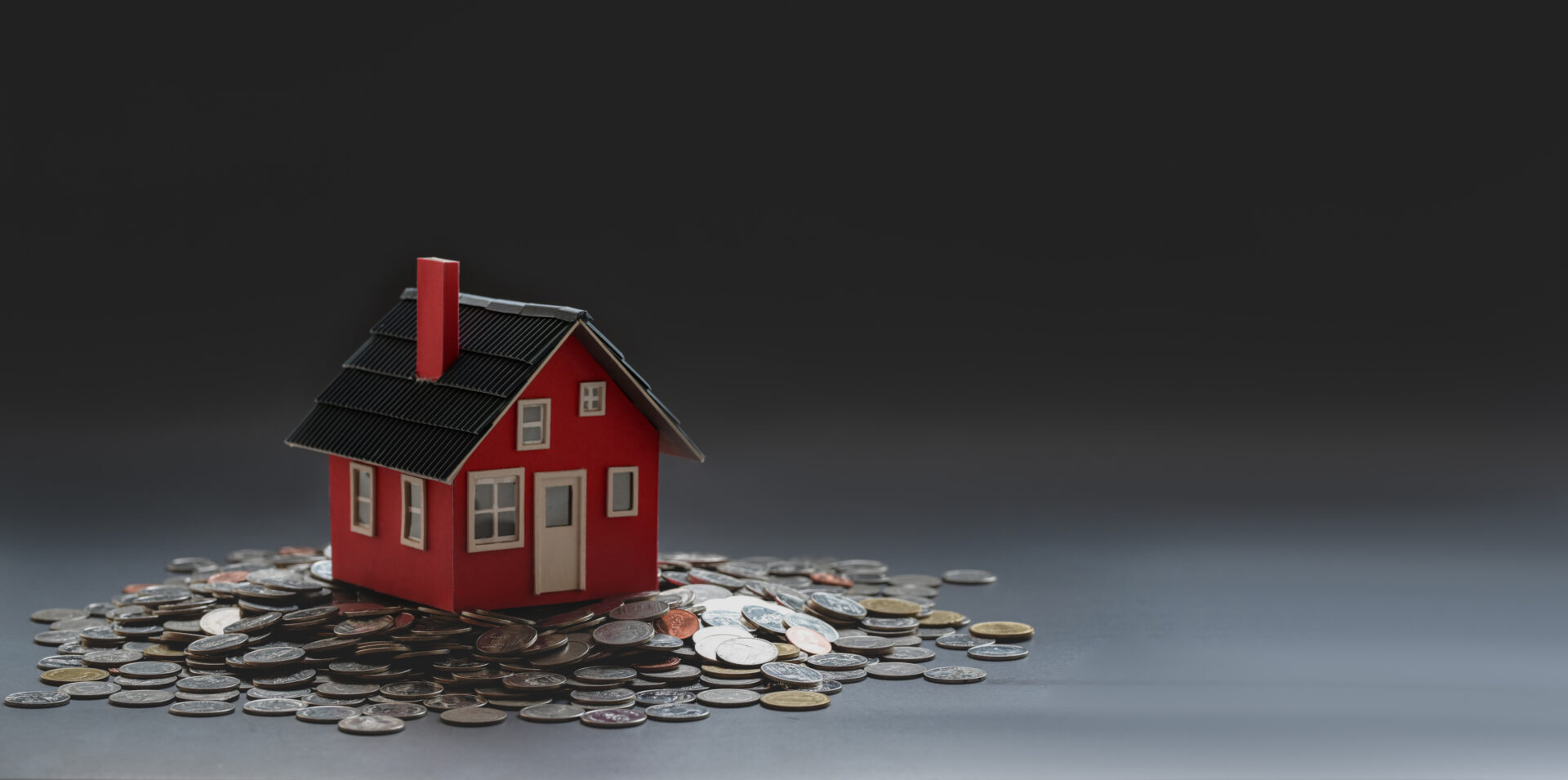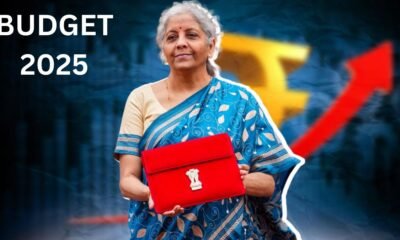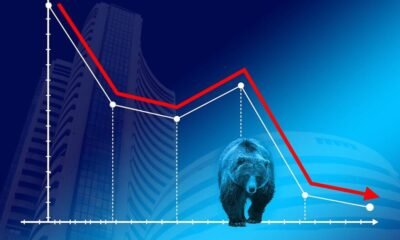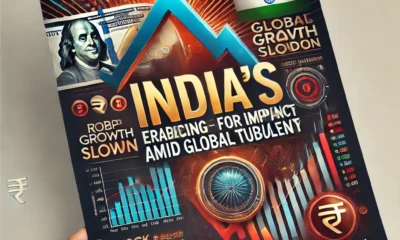Economy
Microfinance Sector Feels the Pinch as RBI Sounds Alarm. The Real Question, Are Indian Households Struggling To Pay Bills?
Published
1 year agoon

Microfinance Sector Feels the Pinch as RBI Sounds Alarm
If you’ve been feeling the pinch on your finances lately, you’re not alone. Indians, on the whole, are finding it harder to save and are increasingly turning to small-ticket loans to make ends meet. The numbers tell a sobering story — a sharp decline in household financial savings and a worrying surge in microfinance bad loans.
Who’s Feeling the Heat?
Major players in the microfinance space, including small finance banks, non-bank lenders, and private sector banks, have all seen their bad loan ratios climb:
Small Finance Banks: A staggering 15.3% bad loan ratio.
Non-Bank Lenders: 13.4%.
Private Sector Banks: 12.1%.
Interestingly, NBFC-MFIs (non-banking financial companies focused on microfinance) had the lowest bad loan ratio at 8.5%. However, for not-for-profit MFIs — a tiny segment of the market — the bad loan ratio surged to a jaw-dropping 37.4%.
The situation is so concerning that IndusInd Bank, a significant player in the sector, saw its stock price tumble over 20% after reporting higher-than-expected provisions for bad loans.
Why This Matters
The Reserve Bank of India (RBI) has been raising red flags about the microfinance sector’s growing vulnerabilities. A boom in credit is always a double-edged sword: while it fuels consumption and economic activity, it also carries the risk of defaults, particularly in times of financial stress.
The broader implications are even more alarming. When household savings dwindle, it’s not just families that suffer; the economy does too. Savings fuel investments, and without sufficient domestic savings, India may have to rely more heavily on foreign capital — a less stable alternative.
How To Address The Savings Conundrum
Let’s start with the basics: household financial savings. Once considered a cornerstone of India’s economic resilience, these savings are now at their lowest point in five years. Data from the Ministry of Statistics and Programme Implementation (MOSPI) reveals a fall of over ₹9 lakh crore in net household financial savings between 2020-21 and 2022-23.
To put it in perspective:
2020-21: Household financial savings were at a robust ₹23.3 lakh crore.
2021-22: A steep drop to ₹17.1 lakh crore.
2022-23: The slide continued, with savings falling to ₹14.2 lakh crore.
This trend is worrying because household financial savings account for over 60% of India’s total savings. These savings are split between financial (like bank deposits and mutual funds) and physical assets (like gold and real estate). The net financial savings figure — the difference between gross savings and household borrowings — has been steadily declining, indicating that more households are taking on debt than putting money away.
Microfinance: A Worrying Underbelly
The microfinance sector, which caters to low-income households with annual incomes below ₹3 lakh, has been an essential lifeline for many. But it’s feeling the strain too.
In the September quarter, the quality of microfinance loans took a hit:
This rise in non-performing assets (NPAs) isn’t just a statistic; it’s a reflection of the growing struggles among borrowers to keep up with their loan repayments. Most microfinance loans are collateral-free, making them accessible but risky. Women, the primary beneficiaries of these loans, are particularly affected, hinting at deeper socio-economic challenges.
Looking Into The Savings Crisis
Here’s a question worth pondering: are Indian households finding it harder to pay their bills these days? If we look at the numbers, the picture isn’t very comforting.
Net financial savings — the difference between investments in financial assets (like bank deposits) and loans taken — are shrinking. And when this metric narrows, it’s a red flag. It suggests people might be earning less, saving less, and relying on loans to fund their everyday expenses. That’s a slippery slope because when debt spirals out of control, defaults begin to rise.
The Debt Trap and Its Domino Effect
When households borrow to pay back old loans, they risk falling into a debt trap. This isn’t just a personal problem — it has broader implications. Banks, burdened with bad loans, may become hesitant to lend. This pulls the brakes on credit flow to sectors that genuinely need funding, setting off a vicious economic cycle.
But wait, there’s a counterpoint. The government has argued that while financial savings are down, Indians are investing more in physical assets like housing. Even SBI’s economic research team chimed in, pointing out that as of March 2023, 50% of the loan value in the system was for home purchases. On the surface, this seems like a positive trend, right?

The Emotional Toll of Homeownership
Indians have an emotional attachment to homeownership, often stretching their budgets to buy their dream homes. But this sentiment can lead to financial strain. High EMIs eat into savings, leaving little room for contingencies.
And here’s the kicker: the rental yield on residential properties in most Indian cities is under 3%. From a financial standpoint, buying a home might not be the wisest investment. The real return on a house can only be realized upon selling, which rarely happens given the sentimental value attached. For many, their home becomes an illiquid asset that ties up a significant chunk of their earnings.
Healthcare, Education, and the Savings Drain
Let’s talk about two major culprits behind dwindling savings: healthcare and education.
Healthcare: Medical costs are skyrocketing, with inflation in this sector growing in the double digits. Despite this, health insurance penetration remains painfully low. Most people end up exhausting their savings or borrowing to cover medical emergencies. A simple health insurance policy could mitigate these expenses for a fraction of the cost, but awareness and adoption remain challenges.
Education: The obsession with higher education, particularly foreign education, has become a societal norm. It’s expensive, and often, families drain their savings or take on educational loans to fund it. The EMIs on these loans then further dent their ability to save.
Millennials, E-Commerce, and the Lifestyle Over Savings Debate
Enter the millennials and Gen Z, who are reshaping consumption habits. This cohort prioritizes experiences and lifestyle upgrades over traditional savings. Think expensive gadgets, vehicles, holidays, and even home makeovers.
Add to this the convenience of online shopping. E-commerce platforms make it almost too easy to spend, with their flashy discounts and tempting offers. And if the funds run out? No problem — online lending portals offer quick loans. The ease of borrowing has encouraged a “live for today” mentality, often at the cost of financial stability tomorrow.
Millennials and Gen Z, who form the largest chunk of India’s population, are redefining spending habits. They’re prioritizing experiences and lifestyle upgrades — the latest gadgets, dream holidays, flashy vehicles, or even home makeovers. Saving for a rainy day? Not exactly high on their agenda.
The convenience of online shopping has only amplified this trend. E-commerce platforms lure customers with irresistible deals, flashy discounts, and easy checkout processes. It’s effortless to spend more than intended when everything you desire is just a click away.
As if seamless shopping wasn’t enough, the rise of online lending has made borrowing money just as effortless. Peer-to-peer (P2P) lending platforms and fintech apps now offer quick, no-questions-asked loans. Need to splurge on the latest smartphone or book a luxury holiday? No problem — you can get a loan in minutes.
But here’s the catch: these loans often come with steep interest rates. Borrowing may feel like a quick fix today, but the long-term cost could be enormous. Many young people fail to realize that this habit of living in the present might jeopardize their ability to “love tomorrow” — when financial stability will be crucial.
RBI’s Red Flag on the Lending Frenzy
The Reserve Bank of India (RBI) is beginning to worry. And rightly so. The issue isn’t just the rise in spending but also the kind of loans fueling this behavior. Unsecured loans, especially the so-called “tiny” personal loans ranging between ₹10,000 and ₹50,000, are growing at a staggering pace.
In FY23, while overall bank credit grew by 15%, unsecured personal loans surged by 48%. That’s not just a number; it’s a sign of brewing trouble. Defaults in this category are already climbing. While overall bad loans in retail remain under 1.5%, tiny personal loans have a worrying default rate of 8.1%.
To make matters worse, a recent UBS report highlights that lending to borrowers already past their due dates has nearly doubled from 12% in FY19 to 23% in FY23. Essentially, more people are borrowing just to pay off older debts, falling deeper into a financial quagmire.
The rise of fintech lending and Buy Now Pay Later (BNPL) schemes has added another layer to the problem. Companies like Google Pay are rolling out “sachet loans” — micro-loans that are as easy to get as they are to misuse. BNPL schemes, while convenient, encourage a culture of impulsive spending.
It’s a slippery slope. These options may seem like lifesavers in the short term, but they’re quietly building a mountain of debt for many.

Are Indian Households Struggling to Pay Their Bills?
Now the most important questions, forgetting the trend displayed by Millennials what is the ground reality of an average Indian household?
Indian households are finding it hard to meet their financial obligations is becoming increasingly relevant. The data and trends paint a picture that, while not universally dire, is deeply concerning for a significant segment of the population.
Rising Food Costs
The Crisil ‘Roti Rice Rate’ report indicates the plight of the average Indian household struggling with relentless food inflation. In September 2024, the cost of a vegetarian thali rose by 11% year-on-year. Onions, potatoes, and tomatoes — staples for many — witnessed jaw-dropping price increases of 53%, 50%, and 18%, respectively.
While these spikes can be partly attributed to supply-side issues, such as lower arrivals and erratic weather, the impact on household budgets is undeniable. The government’s Economic Survey highlighted a doubling of food inflation over two years. Food, which constitutes a large portion of household expenses, is putting immense pressure on Indian families, especially those in lower-income brackets.
Wealth Inequality. The Growing Chasm
India’s wealth inequality has reached historic levels. By the end of 2023, the wealthiest Indians owned over 40% of the nation’s wealth — the highest since 1961. Economic growth seems to have disproportionately favored the wealthy minority, leaving the struggling majority to grapple with rising costs and stagnant incomes.
Despite this glaring disparity, the Central Bank has remained notably silent on income and wealth inequality. Monetary policy discussions have skirted around these issues, focusing instead on macroeconomic indicators that do not reflect the lived reality of most Indians.
The rise in unsecured loans, particularly tiny personal loans, offers further evidence of financial strain among households. In FY23, these loans grew by a staggering 48%, compared to overall credit growth of 15%. Alarmingly, defaults in this category are already at 8.1%, compared to less than 1.5% for retail loans overall.
This borrowing surge suggests that many households are resorting to loans not for investment or asset creation, but to manage day-to-day expenses. Borrowing to pay bills, or worse, to service existing debts, is a clear indicator of financial distress.
Hence, high food prices, rising healthcare and education costs, and a growing reliance on unsecured loans create a challenging environment for Indian households. The government’s claim that people are investing more in physical assets like housing provides little comfort, as home-buying often leads to high EMIs, further squeezing disposable income.
When taken together, these factors point to a troubling reality: a significant portion of Indian households are indeed struggling to pay their bills. This financial strain isn’t just a temporary phase; it’s the result of systemic issues, from income inequality to inadequate social safety nets.
The Final Word
India’s economic narrative is one of contrasts — record-breaking GDP growth on one hand and rising financial strain for households on the other. While some indicators, like physical asset investment, provide a glimmer of hope, they are not enough to offset the mounting pressures of inequality, inflation, and debt.
The time for targeted intervention is now, before these pressures evolve into a full-blown crisis. For many Indian households, the struggle to pay bills is not just a question of numbers but a lived reality. And it’s one that deserves far more attention than it has received so far.
You may like
-


Budget 2025. What’s FM’s Game Plan? Boost Growth, Cut Deficit, Or Finally Listen To The Struggling Middle Class?
-


The Stock Market’s Cracking—And It’s Not Pretty. FIIs Exodus But Analysts Sight Long Term Potential Despite Rs 32,00,000 Core Investor Wealth Gone In 2025. What Is The Bear-ish Deal Here?
-


Has The Indian Economy Entered A “Cyclical Growth Slowdown”? And What Does That Mean For The Average Indian?
-


India To Brace For Potential Shock As US Sanctions On Russian Crude Could Cripple Oil Flow
-


The Story Of Soaring Loans…And Defaults. How Credit Has Taken Over Lives With Little Deposits. No Salary Hikes But Living Costs Remain Steady, An Overall Rough Ride?
-


Why HSBC Downgraded India To ‘Neutral’. What Are The Implications For Markets And Retail Investors Going Forward?
